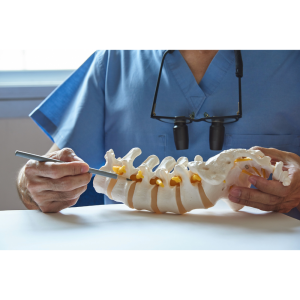Muscle pain of any type can be get difficult to handle. Sometimes the pain may be minor and can be worked through, while other times it can debilitating and hard to handle. One chronic condition that involves muscle pain that many of us may deal with is called the Myofascial Pain Syndrome.
This involves inflammation that is in the soft tissues of the body and cause pain in different areas (referred pain). It could involve one particular muscular area or a group of muscles causing pain.
Here are a few things you should know if you’re dealing with muscle pain or if you think you’re dealing with myofascial pain.
Causes and Symptoms of Myofascial Pain Symptoms
The causes of myofascial pain can be due to an injury or strain of a muscle in the body. It could be due to repetitive motions that injury the muscle groups being used, an excessive strain that is put on the muscle, tendon or even ligaments, or it can be due to inactivity in a group of muscles. This could be due to having an injury to your arm and not being able to move it due to the cast or sling you’re having to wear.
This type of muscle pain originates from what are known as “Trigger Points”. Trigger Points are sensitive areas in the muscle which may under undue pressure. These can cause pain in those specific areas, or it can also produce other problems such as depression, behavioral problems, or fatigue due to the pain the patient is in.
When examined for Myofascial Pain, you may have few types of Trigger Points
- Active – is very tender can cause the muscle to twitch when manipulated and is the most common type
- Latent – which do not cause any immediate pain when probed but can get activated where there’s stress or trauma. Basically, waiting to cause future problems
- Primary – A central trigger point that was activated directly by acute or chronic overload, or repetitive overuse of the muscle in which it occurs.
- Secondary – painful point in the muscle that becomes active when you stress another muscle.
- Satellite – This Trigger Point that activates coz its located near to another Trigger Point

Treatment Options for Myofascial Pain
- There are several options available to treat this type of muscle pain depending on what you’re dealing with at the time.
- You can opt for massage therapy to help reduce the trigger points and work out the kinks in the muscles.
- Physiotherapy to help you gain movement back in those muscles if you’ve dealt with an injury that restricted your movement.
- You may also find that trigger point injection therapy works well for you. This is where the doctor will inject either anaesthetic, saline, or corticosteroids into the trigger point and make it dormant so that it doesn’t cause pain anymore.
- One other method that may be used is the “spray and stretch” method. This is where the trigger point is sprayed with a cooling type spray and then it is slowly stretched out.
- You can also take anti-inflammatory medications to assist with the pain as well
Myofascial Pain Relief in Singapore
Singapore Sports & Orthopaedic Clinic has been in service for the past 20 years in Singapore helping patients with pain relief and treatments. Our team of doctors (specialists & generalists) have treated Myofascial Pain Syndrome for many patients. Call us today for more info.









